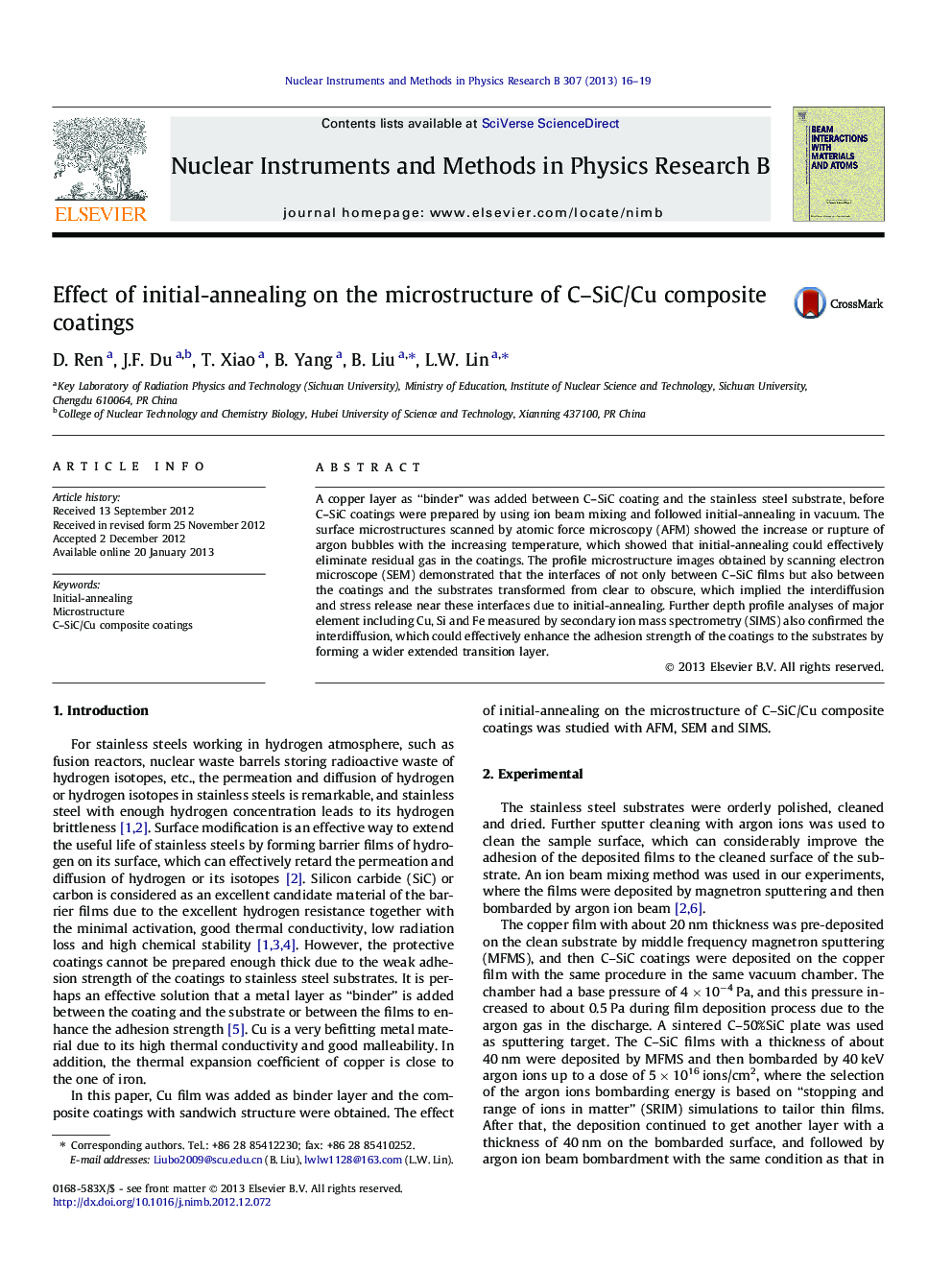| Article ID | Journal | Published Year | Pages | File Type |
|---|---|---|---|---|
| 1681947 | Nuclear Instruments and Methods in Physics Research Section B: Beam Interactions with Materials and Atoms | 2013 | 4 Pages |
Abstract
A copper layer as “binder” was added between C-SiC coating and the stainless steel substrate, before C-SiC coatings were prepared by using ion beam mixing and followed initial-annealing in vacuum. The surface microstructures scanned by atomic force microscopy (AFM) showed the increase or rupture of argon bubbles with the increasing temperature, which showed that initial-annealing could effectively eliminate residual gas in the coatings. The profile microstructure images obtained by scanning electron microscope (SEM) demonstrated that the interfaces of not only between C-SiC films but also between the coatings and the substrates transformed from clear to obscure, which implied the interdiffusion and stress release near these interfaces due to initial-annealing. Further depth profile analyses of major element including Cu, Si and Fe measured by secondary ion mass spectrometry (SIMS) also confirmed the interdiffusion, which could effectively enhance the adhesion strength of the coatings to the substrates by forming a wider extended transition layer.
Keywords
Related Topics
Physical Sciences and Engineering
Materials Science
Surfaces, Coatings and Films
Authors
D. Ren, J.F. Du, T. Xiao, B. Yang, B. Liu, L.W. Lin,
